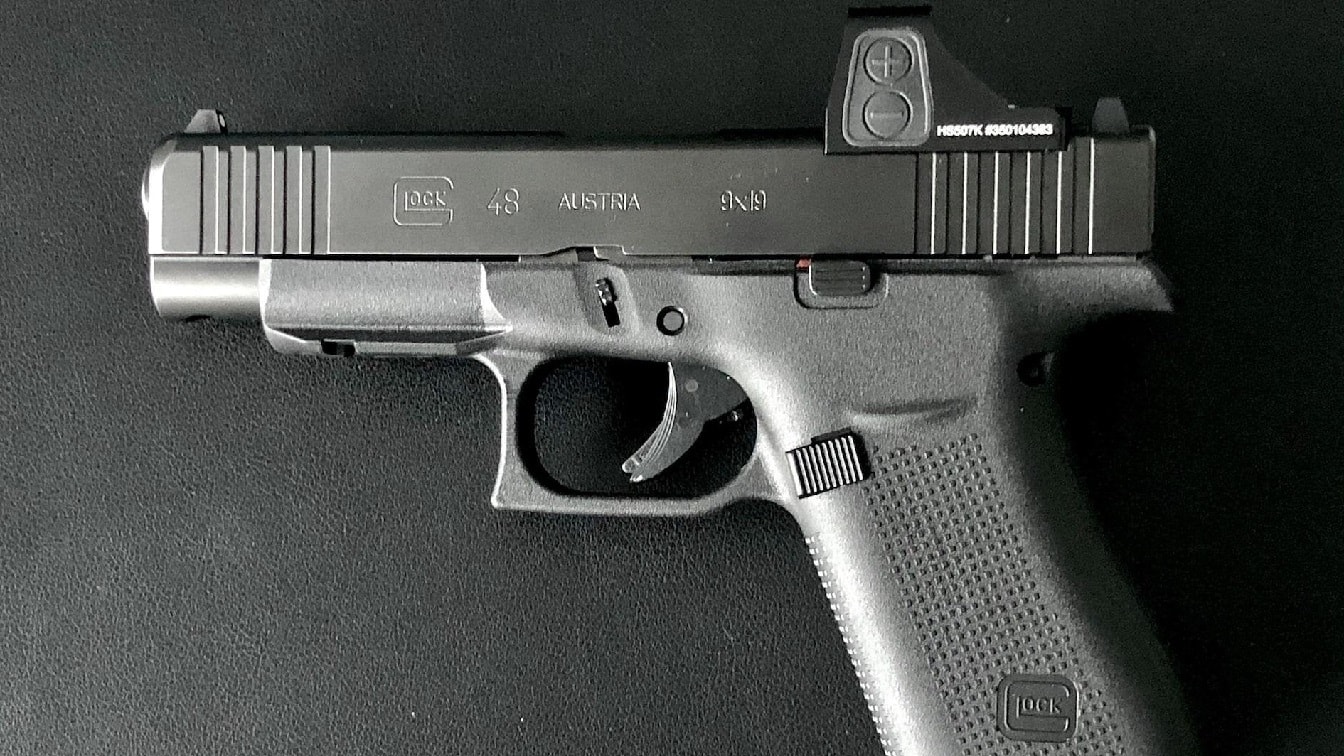Glock Is the Go-to Weapon for Numerous Armies: Glock has become one of the most popular handgun makers that have been taken up by militaries around the world. The Austrian manufacturer makes various pistols that are light, dependable, and versatile. The innovative company changed the way users thought about how a pistol should be designed. Let’s take a look at why they are popular in various defense forces.
How This Gun Was Born: Austrian Inventor Has a Hit On His Hands
It all starts with an idea and Austrian Gaston Glock had a big one.
In 1980, Glock owned a knife and shovel business that supplied the Austrian Army. But he heard through the grapevine that his home country’s military was looking for a new pistol to replace the Walther P-38. What was amazing is that Glock knew little about handguns. But he was up to the challenge. He quickly bought up civilian versions of Berettas, Sig Sauers, and Walthers and he began to analyze the competition.
Find Out What the Customers Wanted
Glock also conducted unscientific polls of military pistol users to get a broad assortment of opinions about sidearms. By 1981, Glock filed his first patent on a new pistol. He had a prototype by 1982 to allow for testing by the Austrian Army. The new Glock had a higher bullet capacity than the current Austrian Army pistol. He wanted it to weigh around 28 ounces with an easy trigger pull and few parts for simple cleaning.
Austrian Army Says “Yes Please”
The Austrian Army loved it. The new pistol was known as the Glock 17 because Glock filed 17 patents. The Austrian Army ordered 20,000 of the polymer-frame handguns. Norway and Sweden took it up in the 1980s too. It became even more popular in Europe. The Netherlands adopted it in 1994. Finland changed over to Glocks in 2008, while Switzerland did so in 2011. India, Israel, and Yemen currently use various Glock models.
Glock Achieves American Patent Protection
The sidearm had only 34 parts – less than competing guns, so maintenance was simple. With three internal safeties, The polymer model could take a beating and still fire without many malfunctions. He got a U.S. patent for the gun in 1985.
The United States Still Ordering Glocks
Even though the Sig Sauer M17 and M18 have replaced the Beretta M9, in September of last year the U.S. Army chose Glock America in Smyrna, Georgia for a new $15 million contract. This will be for pistols, magazines, and spare parts. The order includes 1,500 G17 handguns; 5,000 G19s; and 2,200 G26 pistols.
Special Operation Forces Can’t Resist
Glocks are still carried by American Special Ops units too such as the Navy SEALs. Delta Force and Army Special Forces began using them in the mid-2000s. They have a simple design. So, it was easier to teach new users in armies in Iraq and Afghanistan – personnel that Army Special Forces and other units trained after 9/11 during the global war on terror. Some U.S. Marines in MARSOC units also prefer the Glock.
Surprisingly, even American four-star General Austin “Scott” Miller was reportedly seen with a Glock by his side in Afghanistan.
France Joins the Gang
France chose the next-generation Glock 17 to replace their aging MAC (Manufacture d’armes de Châtellerault) 50s and PAMAS G1s with 75,000 Glocks. This will be for the entire army and special operation forces units, plus the navy and air force. The contract is notable because the French often prefer homegrown defense contractors. But the French ran the Glock 17 through extensive tests, and it performed above expectations.
The Brits See the Light
In 2013, the British Armed Forces chose the Glock 17 as an alternative for the Browning L9A1 that they had been using for forty years. The Brits liked the Glock’s double-stack magazine, lightweight (less than the Browning), three internal safeties, and quick-firing attributes.
My experience with Glocks is that they feel extremely comfortable with great balance. Soldiers around the world must agree. Gaston Glock probably thought he could sell a few guns to the Austrian Army and call it a day. He likely never imagined his name would be synonymous with handguns in militaries worldwide.
Now serving as 1945’s Defense and National Security Editor, Brent M. Eastwood, PhD, is the author of Humans, Machines, and Data: Future Trends in Warfare. He is an Emerging Threats expert and former U.S. Army Infantry officer. You can follow him on Twitter @BMEastwood.

